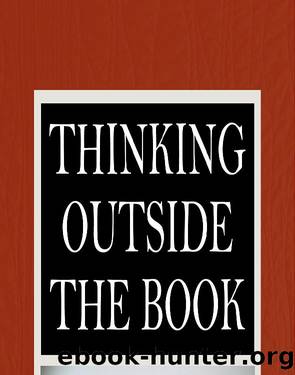Thinking Outside the Book by Augusta Rohrbach

Author:Augusta Rohrbach
Language: eng
Format: epub
Publisher: University of Massachusetts Press
Published: 2015-08-15T00:00:00+00:00
To a war-ravaged woman of the North or South, these lines point the way to a redefinition of social purpose for women that does not include marriage. But if Irene is modeled on the Greek goddess Minerva, she also finds a source in Evansâs childhood slave Minervy, who carried the light that enabled her to write her first novel. Subsuming Minervy into Minerva, Evans expresses a collective and collecting set of ideas that have complex roots in the mentalité of the time out of which they emerge.
Just as Evans purposefully deploys her sources, so she uses genre in ways that espouse a more radical message. Even as she maintains a degree of subservience to conventional moral and social codes regarding women, she formally eschews those conventions by putting politics at the center of the plot. Other key generic violations anticipate a modern, postbellum culture. The hero of the novel, Russell Aubrey, ends up dead, and the competing loves of his life, his orphaned cousin Electra and Irene, Electraâs friend, are united through their devotion to him. They both remain unmarried, choosing to dedicate their lives to the good of others. The novel ends with this new social formation, diminished by war as the states have been, but persevering through the shared ideology of sacrifice.
In the bookâs final pages, we are left with the orphan artist Electra at her easel, painting her âModern Macaria,â modeled on her savior, Irene. Electra declares: âI want to lay my âModern Macaria,â as the first offering of Southern Art, upon my countryâs altar, as a nucleus around which nobler and grander pictures, from the hands of my countrymen and women, shall clusterâ (409). She also articulates larger goals for a developing South: âIn sunny climes like ours, my glorious Art had its birth, its novitiate, its apotheosis; and who dare say that future ages shall not find Art-students from all ages pressing, like pilgrims, to the Perfected School of the Southern States? Ancient republics offered premiums, and saw the acme of the arts; why not our Confederate republic, when days of national prosperity dawn upon us?â (409). Rather than posit a Confederate military triumphâthe war was still raging when Macaria was first publishedâthe novel explores a Southern future apart from politics.
In a brilliant move that helps explain the bookâs many reprintings over time, the novel does not present the North and South as opposed; instead it celebrates the differences between North and South, anticipating the reconciliation logic that permeated postbellum treatments of the conflict and made room for the South and its supporters to retain a sense of lost cause superiority. The two heroines call âthe Southern planter classâ to action, demanding that it live up to its purportedly noble resources. Irene describes what is needed to make this legacy reality. âIn order to effect this âconsummation devoutly to be wished,ââ she says, regarding her revolutionary plan to open a school for women, âit is necessary that the primary branches of Art should be popularized, and thrown open to the massesâ (410).
Download
This site does not store any files on its server. We only index and link to content provided by other sites. Please contact the content providers to delete copyright contents if any and email us, we'll remove relevant links or contents immediately.
| Booksellers & Bookselling | General |
| History of Books |
4 3 2 1: A Novel by Paul Auster(11078)
The handmaid's tale by Margaret Atwood(6878)
Giovanni's Room by James Baldwin(5898)
Big Magic: Creative Living Beyond Fear by Elizabeth Gilbert(4740)
Asking the Right Questions: A Guide to Critical Thinking by M. Neil Browne & Stuart M. Keeley(4608)
On Writing A Memoir of the Craft by Stephen King(4226)
Ego Is the Enemy by Ryan Holiday(4008)
Ken Follett - World without end by Ken Follett(3984)
The Body: A Guide for Occupants by Bill Bryson(3828)
Bluets by Maggie Nelson(3729)
Adulting by Kelly Williams Brown(3687)
Guilty Pleasures by Laurell K Hamilton(3603)
Eat That Frog! by Brian Tracy(3530)
White Noise - A Novel by Don DeLillo(3446)
The Poetry of Pablo Neruda by Pablo Neruda(3375)
Alive: The Story of the Andes Survivors by Piers Paul Read(3325)
The Book of Joy by Dalai Lama(3241)
The Bookshop by Penelope Fitzgerald(3240)
Fingerprints of the Gods by Graham Hancock(3230)
